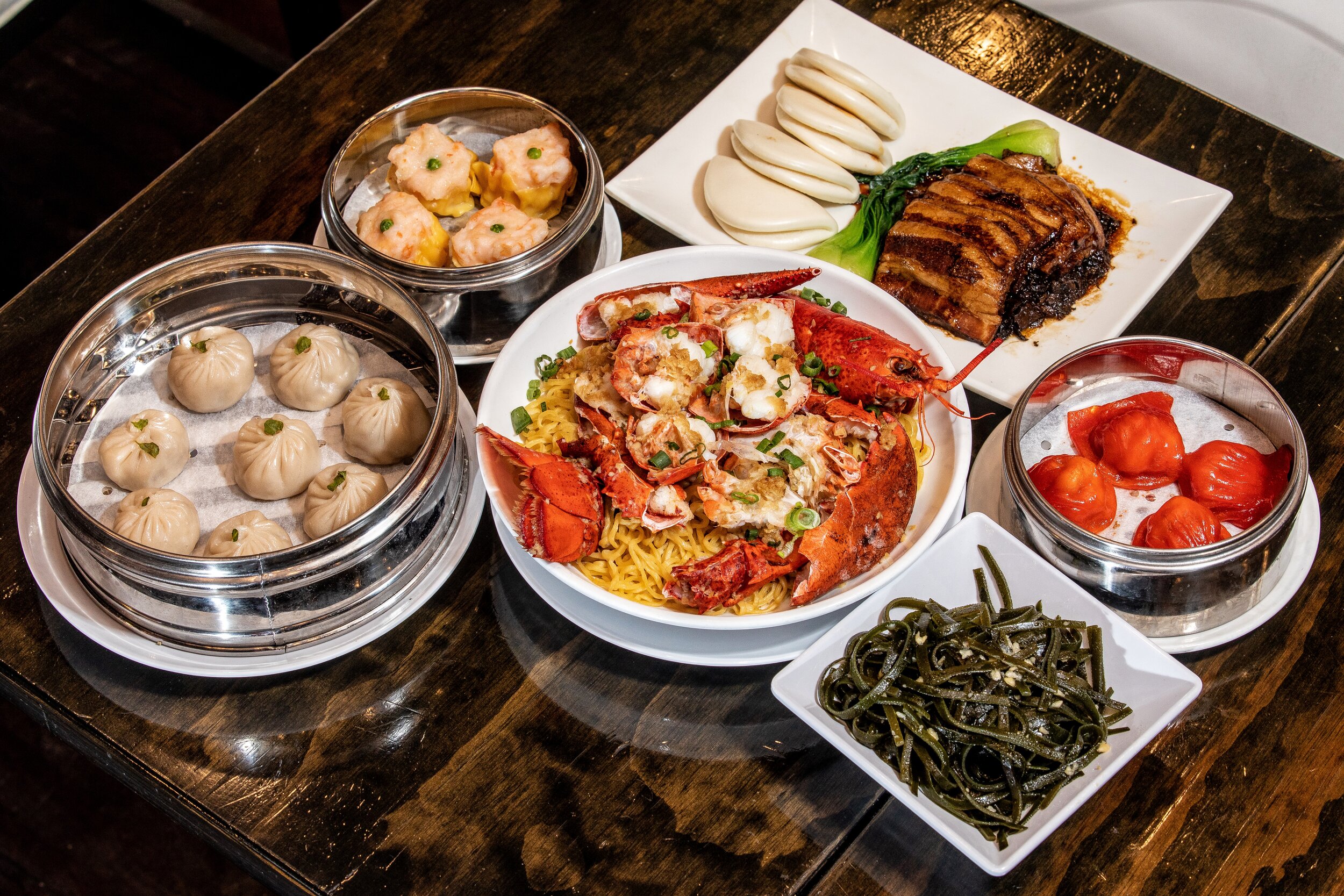Introduction
Dim sum House, a quintessential part of Chinese culinary culture, has captured the hearts and palates of food enthusiasts worldwide. Steeped in history and tradition, dim sum houses are more than just places to enjoy delicious bites; they are cultural hubs where stories are shared, bonds are strengthened, and memories are made. Originating from the teahouses along the ancient Silk Road, dim sum has evolved into a diverse array of delectable dishes served in bustling eateries known as dim sum houses.
Traditional Dim Sum Delicacies
Steamed, fried, or baked, traditional dim sum delights offer a tantalizing array of flavors and textures. Steamed BBQ pork buns, known as Char Siu Bao, are pillowy-soft buns filled with succulent barbecued pork, offering a perfect balance of sweet and savory. Har Gow, delicate shrimp dumplings encased in translucent wrappers, showcase the artistry of dim sum chefs with their intricate pleats. Siu Mai, plump pork dumplings topped with a vibrant orange roe, are a staple of any dim sum feast, bursting with savory goodness.
Fried dim sum options tempt with their crispy exteriors and flavorful fillings. Spring rolls, filled with a medley of vegetables or meat, are golden parcels of crunchiness, perfect for dipping into tangy sauces. Deep-fried dumplings, with their crispy shells giving way to savory interiors, offer a delightful contrast of textures. Sesame balls, or Jin deui, feature chewy glutinous rice dough coated in sesame seeds and filled with sweet bean paste, making for irresistible treats.
The Dim Sum House Experience
Stepping into a dim sum house is like entering a culinary haven, where the aroma of freshly steamed dumplings mingles with the sound of clinking teacups and animated chatter. The decor is often ornate, with red lanterns casting a warm glow over the bustling space. As guests settle into their seats, servers push carts laden with steaming bamboo baskets, inviting diners to choose from a tantalizing array of dishes.
Tea is an integral part of the dim sum experience, with a wide selection of fragrant brews available to complement the meal. From delicate green teas to robust oolongs, each sip enhances the flavors of the dim sum dishes. Tea pouring is a ritual in itself, with etiquette dictating the proper way to serve and receive tea. As diners engage in lively conversation and laughter fills the air, the dim sum house becomes not just a place to eat, but a vibrant community gathering spot.
Dim Sum Around the World
While dim sum originated in southern China, its popularity has spread far and wide, with dim sum houses found in cities across the globe. Each region puts its own spin on dim sum, incorporating local ingredients and flavors while staying true to the essence of the tradition. In Hong Kong, dim sum is a beloved part of daily life, with iconic restaurants serving up classic dishes alongside innovative creations.
In the United States, cities like San Francisco and New York boast vibrant Chinatown districts where dim sum houses abound. Here, diners can sample a diverse range of dim sum offerings, from traditional favorites to modern interpretations. In London, dim sum has become a trendy dining option, with chic restaurants putting a contemporary twist on classic dishes.
Behind the Scenes: Crafting Dim Sum
At the heart of every dim sum house is a team of skilled chefs dedicated to perfecting the art of dim sum making. From meticulously folding dumpling wrappers to expertly seasoning fillings, each dish is crafted with care and precision. Ingredients play a crucial role in dim sum preparation, with fresh seafood, succulent meats, and fragrant spices coming together to create irresistible flavors.
Technique is also key in dim sum making, with chefs mastering the art of steaming, frying, and baking to achieve the perfect texture and flavor. Whether it’s the delicate pleats of a har gow or the crispy shell of a spring roll, every dim sum dish requires careful attention to detail. Chefs often spend years honing their skills, learning from seasoned masters and perfecting their craft through trial and error.
Health and Nutrition
While dim sum is undoubtedly delicious, it’s also important to consider its nutritional value. Many dim sum dishes are rich in protein, vitamins, and minerals, making them a healthy choice for diners. Steamed options, in particular, are low in fat and calories, making them a great option for those watching their waistlines.
However, some fried dim sum dishes may be higher in calories and fat due to the cooking method. It’s essential to enjoy these treats in moderation and balance them with lighter options like steamed vegetables or tofu dishes. Fortunately, many dim sum houses offer a variety of healthy choices, including vegetarian and vegan options made with fresh, wholesome ingredients.
Dim Sum and Cultural Significance
Beyond its culinary appeal, dim sum holds deep cultural significance in Chinese society. Traditionally served as a morning or midday meal, dim sum is a social affair where friends and family gather to share food and conversation. The communal nature of dim sum dining fosters a sense of togetherness and belonging, reinforcing bonds and strengthening relationships.
Dim sum is also deeply intertwined with Chinese festivals and celebrations, with certain dishes holding symbolic meaning. During the Lunar New Year, for example, dumplings are often served to symbolize wealth and prosperity, while glutinous rice dumplings are enjoyed during the Dragon Boat Festival to commemorate the ancient poet Qu Yuan. In literature and film, dim sum often serves as a backdrop for stories of love, family, and tradition, further cementing its place in Chinese culture.
Evolution of Dim Sum Houses
Over the years, dim sum houses have evolved from humble teahouses to bustling restaurants, adapting to changing tastes and lifestyles. While traditional dim sum houses still exist, many modern establishments offer a more contemporary dining experience, with sleek interiors and innovative menus. Globalization has also played a role in shaping the dim sum landscape, with influences from other cuisines and cultures seeping into traditional dishes.
Despite these changes, the essence of dim sum remains unchanged, with its emphasis on quality, flavor, and communal dining enduring through the ages. In an increasingly fast-paced world, dim sum houses provide a welcome respite, offering diners a chance to slow down, savor the moment, and connect with loved ones over a shared meal.
You read also more : hotel with hot tub in room
Exploring Dim Sum House Traditions
Dim sum houses are steeped in tradition, with time-honored rituals and customs adding to the allure of the dining experience. From the moment guests enter, they are greeted with a warm welcome and ushered to their tables with care. Tea pouring is a central aspect of dim sum service, with servers circulating the room, ensuring teacups are never empty.
Ordering dim sum is an art in itself, with diners selecting dishes from passing carts or ordering directly from the menu. As plates pile up and teacups are refilled, the dim sum house comes alive with the sounds of clinking dishes and animated conversation. For many diners, these rituals are as much a part of the dim sum experience as the food itself, evoking a sense of nostalgia and tradition.
Sustainability and Ethical Practices
In recent years, there has been a growing emphasis on sustainability and ethical practices within the food industry, and dim sum houses are no exception. Many establishments are now sourcing ingredients





